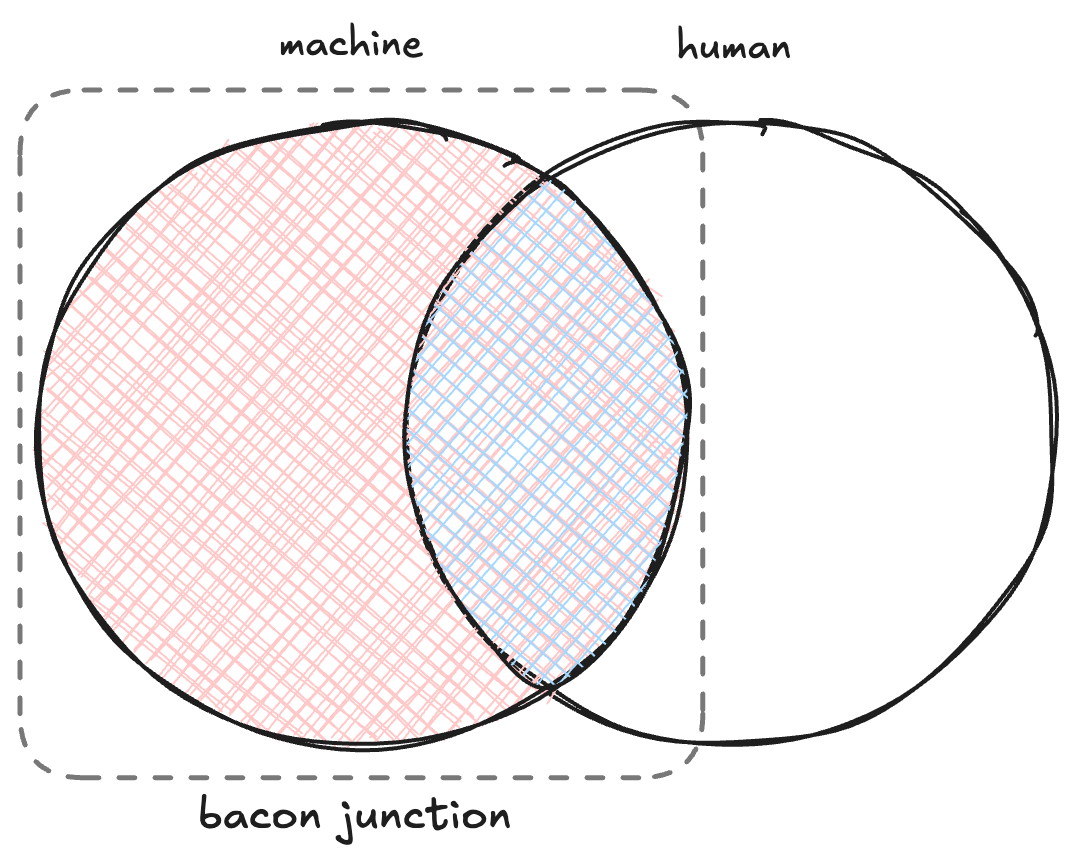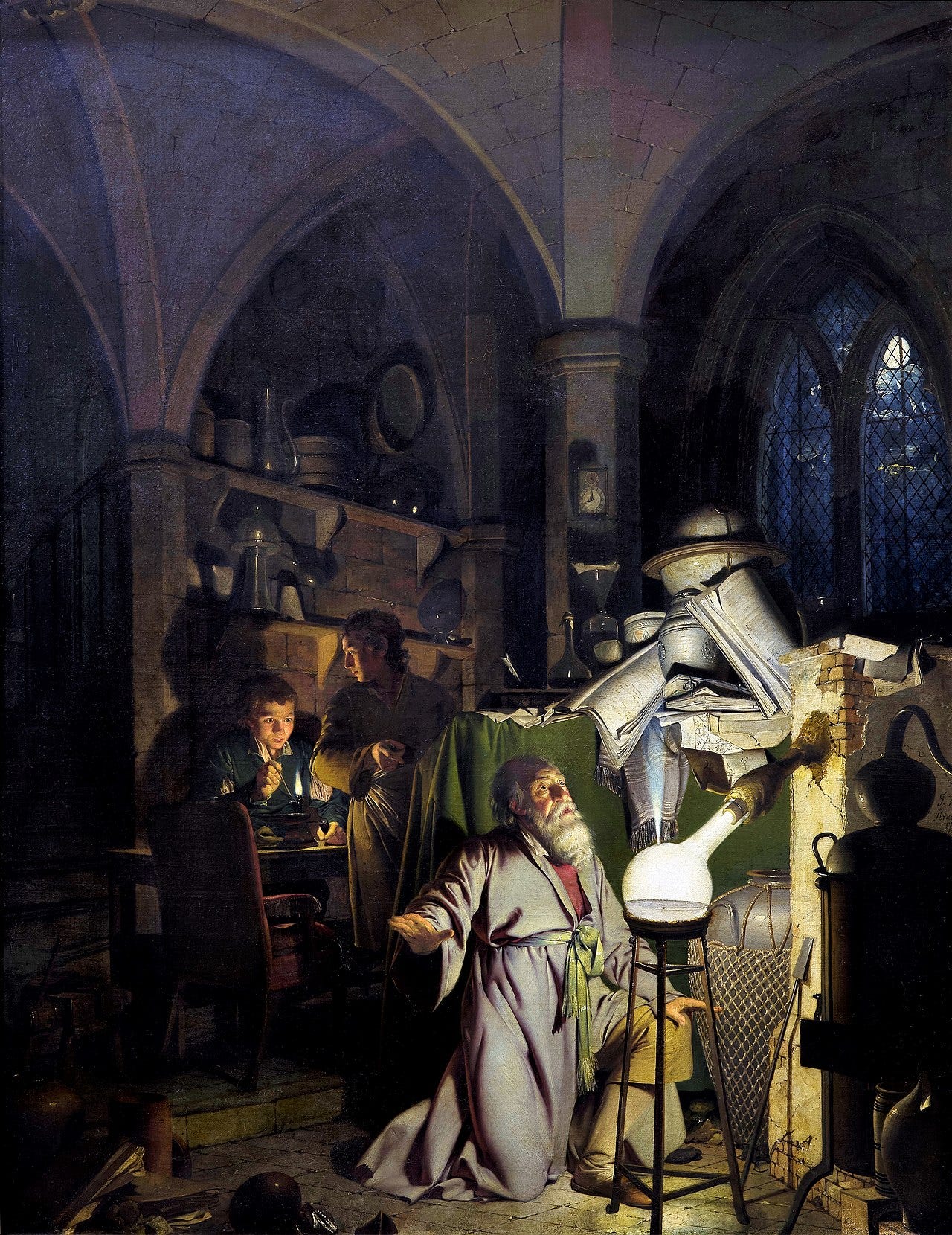The Bacon Junction
Can AI Help Us Reclaim the Lost Art of Serendipity in Science?
Science used to be a wild, creative frontier, but today it has become an industry.
This shift has brought both tremendous progress and considerable costs. Progress has driven increasing specialisation, with more and more background knowledge required to make any progress. Ideas seem to be getting harder to find and breakthroughs ever rarer. The pursuit of truth, which was once a messy, playful, and uncertain endeavor, has become a sterile process - filled with endless grant applications but with little serendipity and even less joy.
But if real discovery lives at the edges and thrives in chaos, how do we find our way back?
Science was built on the backbone of true polymaths. It began in the age of alchemists, tinkerers, and natural philosophers - when disciplines didn’t exist to constrain thinking, but to challenge and expand it.
During the scientific renaissance, thinkers and tinkerers could jump from one field to the other, without much friction. From this freedom, new worldviews were forged and one of the most enduring came from Francis Bacon, who visualised the scientific project as an expedition into uncharted waters.
Interdisciplinarity sat at the heart of scientific progress and adoption. Young, talented apprentices were able to follow their hunches from blacksmith shops to alchemy labs. Their curiosities did not need to be constrained by niche disciplines but they could forge their own paths, and become true polymaths.
In New Atlantis, Bacon imagined a utopian research institute devoted to discovery, invention, and the public good. He called this Solomon's House, and the Brethren of Solomon's House were explorers of knowledge, travelers, collectors, and creators, working together to push the boundaries of what was possible.
How should we bring the Renaissance spirit back to science and rediscover Solomon’s House? We want to move away from grant cycles, paper mills, and rigid hierarchies that dominate research culture. We need a new system that revives the creative chaos of discovery without losing the rigor that modern science has achieved.
Embracing the chaos
We believe LLMs can help us do that, if they’re embedded to work alongside humans.
We do not believe in a future where AI will completely replace humans. Rather, we envision a human-machine symbiosis that enhances human thinking rather than replacing it. This important vision requires us to reimagine how the current models and AI agents are used to support R&D and discovery processes across disciplines.
The current AI discovery tools aim to automate the entire process of scientific discovery and hypothesis, with humans only entering the loop in order to verify what the LLMs have generated. We believe this approach is underutilising humans and the process of discovery. The most important zone is where the fun stuff, serendipity, and most productive collaboration between a human and a machine occurs. We call it the Bacon Junction.
Sometimes, doing science feels, to quote Andrew Wiles, like entering a dark mansion. You stumble around blindly and gradually learn the layout, until one day you find the light switch, illuminating everything and revealing exactly where you are.
We believe LLMs can illuminate parts of that mansion more quickly. What if we could see patterns in the darkness that human eyes alone might miss?
They can help us bridge this gap by extracting, linking, and verifying scientific claims that often lie in discrete domains or niche papers and spotlight their critical relationships. With AI tools, we can improve conventional research methods so that it takes moments to make a connection that otherwise would have taken years. LLMs aren’t bound by scientific disciplines; they can actively cut out the silos and introduce serendipity back into science.
We want to use today’s tools to keep the heart of Bacon's dream alive: knowledge as a force for good, applied for the benefit of all.
“Hello, World!”
Our vision here isn’t merely science fiction. We've already seen glimpses of this symbiosis in other fields.
When AlphaZero mastered chess, it didn't just beat humans – it helped us upgrade our own game. Grandmasters studied the strategies AlphaZero used and learned new approaches that centuries of human chess development had not discovered.
We’ve seen something similar unfold in biology with AlphaFold. In a breakthrough once thought to be decades away, an AI system predicted the 3D structures of proteins, a task so complex that solving a single structure could take years in the lab. Suddenly, entire proteomes were laid bare in days. But more than just accelerating analysis, AlphaFold became a partner in discovery. AlphaFold didn’t just speed up science; it encouraged new methods of scientific exploration.
These examples give us a glimpse into the future of Bacon Junction. This is the kind of collaboration we envision: AI models not as sterile engines of automation but as catalysts for creativity. Not to erase the scientist but to empower them. To build Solomon’s House again, not with brick and parchment but with silicon and code.
Building the Jarvis
Our vision for science is similar. We want to build systems that don't just answer questions but also spot patterns in data that are too subtle or cross-disciplinary for humans to notice. These tools would formalize new concepts and package them as insights that could be communicated to humans. The goal? Not to replace scientists, but to give them the daily "AlphaZero moments"; those flashes of "Why didn't we think of that?" which push the frontier forward, little by little.
Our thesis echoes the early visions of pioneers like J.C.R. Licklider, who in 1960 proposed a future of man-computer symbiosis - a close, cooperative interaction between people and machines that enhances both. He didn't see computers as rivals to human intelligence, but as cognitive partners that could help us think better, faster, and more creatively. That vision feels more relevant than ever today.
But to achieve this vision, we need better human interfaces. The current ones, well, to be honest, they suck. Chat is everywhere, but chat is also annoying. We can do so much better, and we really need to. We need to fundamentally rethink how we interact and interface with AI and reasoning tools to capture the most value we can from these models.
We probably need entirely new interfaces. We might even need a new language to access the knowledge embedded in advanced AI systems and communicate AI insights to humans. Building thoughtful interfaces that translate AI thinking into a human-understandable form isn't just about making AI more accessible, it's about expanding human knowledge itself.
Do we know how to do this yet? Not really, we're starting to sail without a clear map. But that's more than half the fun of science, we're excited by both the concepts we'll encounter and the people we'll meet who are thinking on the same horizon. We hope to recapture the spirit of those early alchemists and natural philosophers: the curiosity, the cross-disciplinary exploration, and the drive to understand the world through first principles.
If you’re also excited by any of these ideas, reach out!
Thank you to Lauren Gilbert, Enlli Lewis, Gavriel Kleinwaks for helpful edits.





